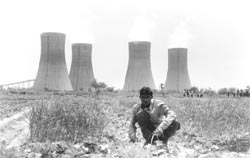Treating a compound
 polyaromatic hydrocarbons ( pah s) are carcinogenic compounds which are usually found in the urban areas. They are also the key ingredients in smog. pah s are formed due to the incomplete combustion of coal, oil and gas.
polyaromatic hydrocarbons ( pah s) are carcinogenic compounds which are usually found in the urban areas. They are also the key ingredients in smog. pah s are formed due to the incomplete combustion of coal, oil and gas.
For the past one year, Dan Golomb, an associate professor in the department of environmental, earth and atmospheric sciences at UMass-Lowell in Massachusetts, usa, and George Fisher have been studying pah s at the Massachusetts Bay. By measuring the amount and identifying the source of pah s at Nahant beach, the researchers hope to learn how these carcinogenic compounds arrive in the bay. That, in turn, should help researchers develop methods for decreasing the amounts of the harmful pah s not just in the bay, but also in similar coastal areas.
Produced by a number of sources: power plants, incinerators, boilers and furnaces, wood stoves, cars, trucks, and aeroplanes, pah s are known to be harmful for human health. "Fish and crustaceans are also affected by lesions and tumours that are most likely caused by pah s,' says Golomb.
Atmospheric deposition, is the primary source that enables pah s to enter coastal waters. The other sources of pah s are spilled crude oil, leaching from paved roads and dumped tar and residue oil. Atmospheric deposition takes place in two ways: dry and wet. In dry deposition, airborne pah s, in the form of vapour and particles, hit the ocean surface and get absorbed. In wet deposition, raindrops and snowflakes gather minute concentrations of pah s, explain the researchers. These droplets, then, end up in coastal waters.
Golomb and Fisher have created a novel two-part device that is perched atop a hill at Northeastern University's Marine Science Centre, in order to stimulate both wet and dry deposition of pah s in the water. On one side, the device contains a funnel to collect precipitation and on the other side, it contains a small pool of water on which particles can land.
In another project, Golomb regularly measured pah s in Nahant and in Truro, Boston. This project provided the data on the total amount of pah s that come down annually every season. "But this project,' says Golomb, "is a real whodunit' aimed at identifying the areas from which pah s are streaming.
Thus, the researchers are concentrating on episodes: collecting rain from one storm or pah s that arrive when the wind is blowing from just one direction. This is accomplished by a wind vane attached to the collection device and an innovative software programme written by Fisher, whose earlier career as a meteorologist in the Air Force has come handy. The programme receives information from the wind vane and, depending on its sampling instructions, directs a motor to open or close a lid over the two collection points.
In the collection device, wet precipitation trickles down a funnel into a cartridge filled with an absorbent that removes pah s. On the dry side, which collects pah s into the pool of water, the water also runs down the funnel with a similar adsorbent. The adsorbed pah s are then flushed out with a solvent so that they can be analysed at the laboratory with the help of a gas chromatograph-mass spectrometer, which provides data on pah content in grammes per square metre per unit of time.
According to the researchers, aircraft travelling to and from Logan airport are the major source of pah s, which can be seen as a hazy dark thread in an otherwise blue sky.
Golomb observes that the project doesn't aim to point fingers at one airport or power plant, or even at a particular place or a city, instead it focuses on the source areas, figuring out where the clouds carrying pah s originate.
"Clouds that sweep up the Washington and Boston corridor seem to bring more pah s than clouds that gather over the ocean and then precipitate here,' Golomb says. Eventually, he anticipates that the findings from this research will more closely pinpoint the culprits in the pah production. "Suppose we found out that incinerators are a major source, then the managers would have to insist that the incinerators be run with more controls to catch more smoke,' says Golomb.
Golomb, however, concedes that coastal pollution is inevitable with such urban sprawl. But for now, by plucking a few pah s from the air, he hopes to ensure that winds with less pah content flow over the Massachusetts Bay in the future.
Reported by Richa Shukla
Related Content
- Regional assessment report on disaster risk reduction 2023: Europe and Central Asia
- UK rivers contain traces of 29 pharmaceutical drugs, finds study
- Cape Town water being treated for harmless compound
- Isolation and characterization of three and four ring PAHs degrading bacteria from contaminated sites, Ankleshwar, Gujarat, India
- Disturbing findings in CSE’s second study on Pali
- Cancer-fighting drugs might also stop malaria early
